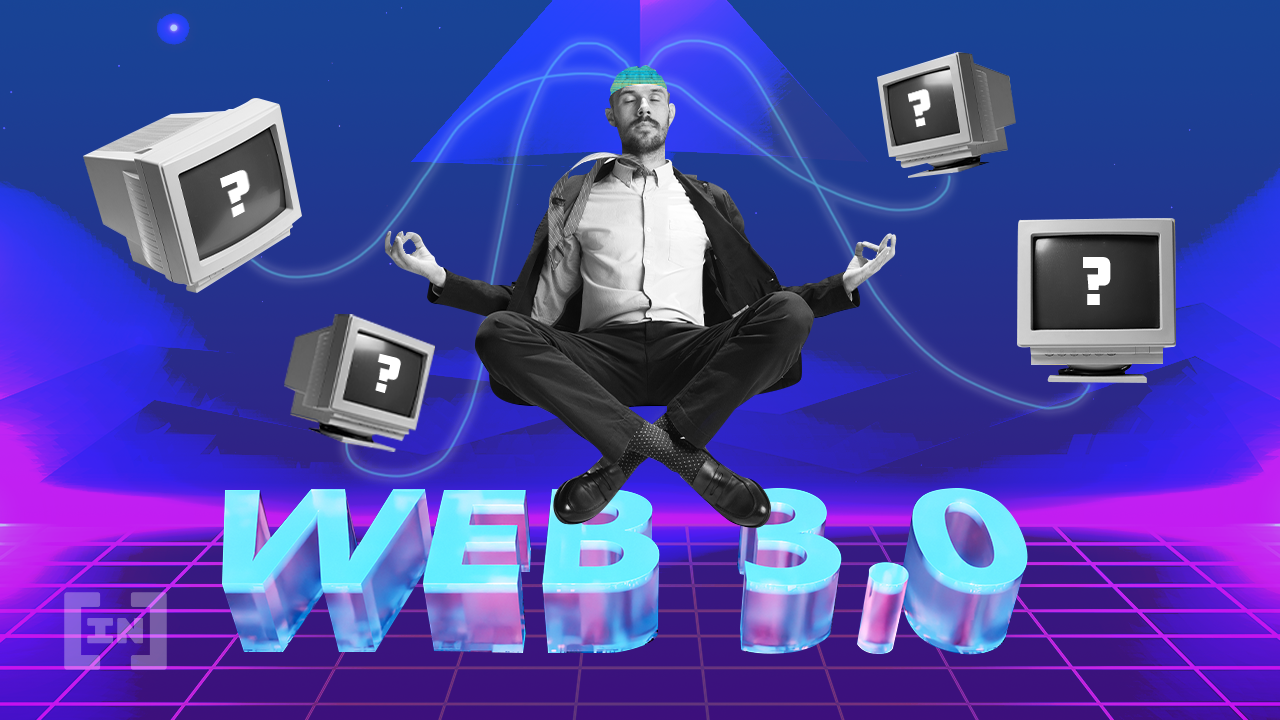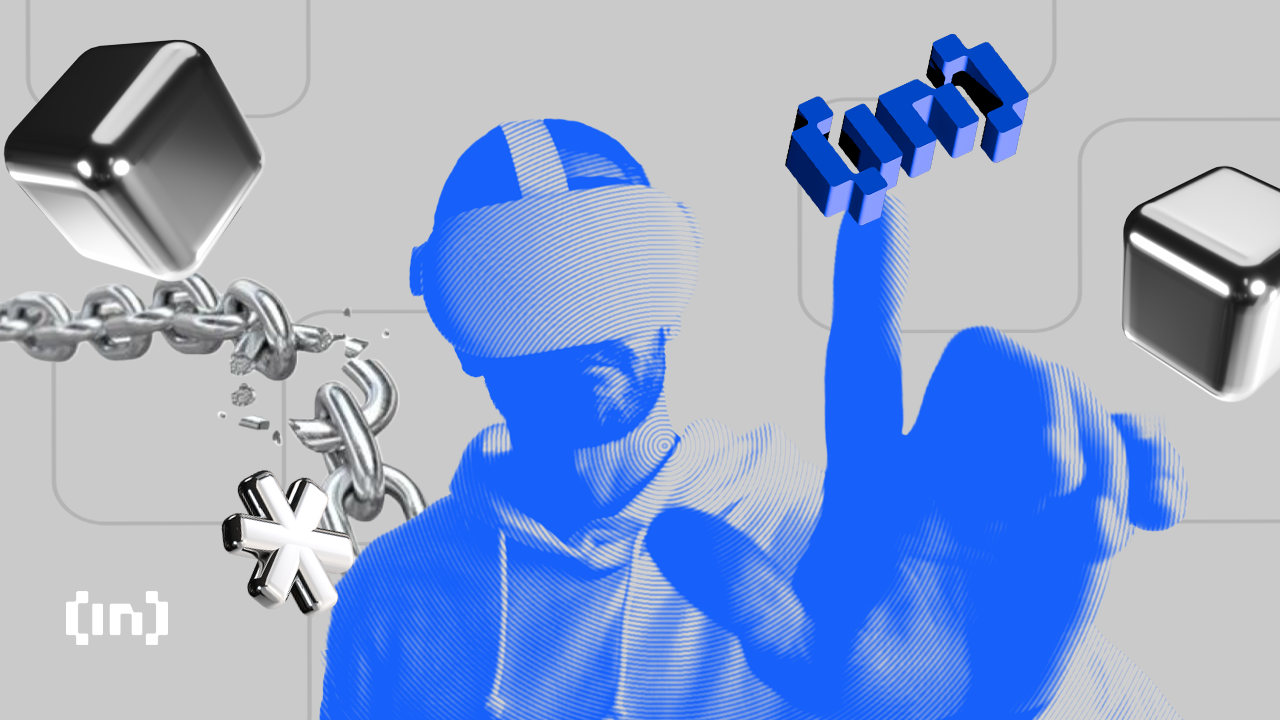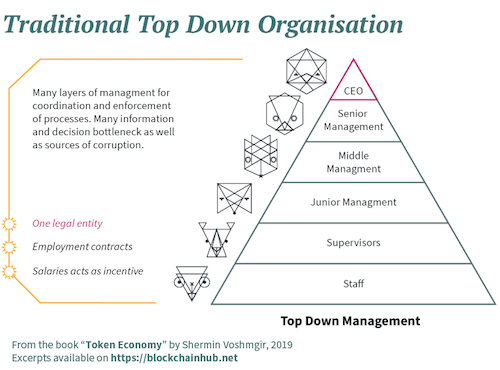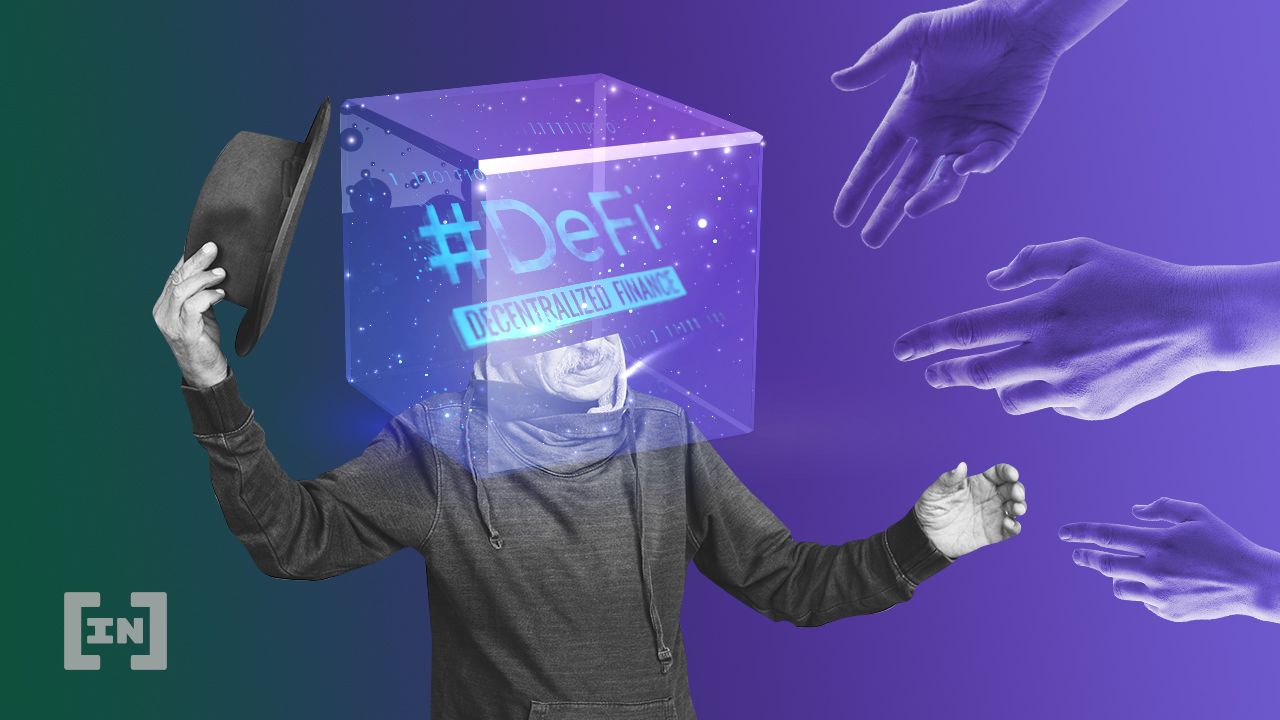Web3 is already here. Although maybe not as glamorous as it is portrayed in the entertainment business, it is wise to get an understanding of how web3 use cases that will transform the world of technology.
Why? Web3 has the potential to radically transform our internet experience, and the way in which our personal data is used.
Understanding the current pillars of web3 is the quickest way to dive in this novel digital world. Let’s start by looking at web3’s use cases.
In this guide:
What are web3 use cases?

When something has to be pointed out, it is still far from the standard. The internet’s present standard is web2. Companies dominate the web2 by a centralized, account-based architecture. The web2 revolves around half a dozen corporations such as Google, Meta, Amazon (AWS), TikTok, Twitter, and Reddit.
SponsoredIt is convenient to have interlinked accounts that cover all user experience. However, it leaves users vulnerable to privacy breaches and arbitrary censorship. Bitcoin demonstrated the use cases with its proof of work P2P money network. After which, it became clear that the same principle could be applied to the internet itself.
Web2 allows users to create and publish content. Yet, it’s the larger tech corporations that own such content — they receive the advertising revenue that such content generates, the personal data which provides them with unique insights that they monetize, and they control who has access to their platforms. Web3 is about decentralizing control and access, while allowing content creators to own their content — and much of what is accompanied by it (revenue, data, etc.).
In this way, permissionless blockchains power the web3 internet. Instead of relying on accounts provided by corporations, web3 would rely on non-custodial accounts called crypto wallets. Through these gateways that unlock blockchain access, users get to control their assets and deploy them where they see fit.
Web3 use cases are any ideas that have product market fit and will proliferate the adoption of the web 3. Here is what that looks like across five central use cases of Web3.
The Metaverse

Carried on from movie influences, such as Ready Player One, the concept of the metaverse is often conflated with virtual reality (VR) immersion. In this interpretation of the term, the metaverse implies virtual mimicry of the real world, layered on top of the physical world into which one enters with VR goggles, as one of the most common examples.
Right now, in web2, the internet is just something that one browses and publishes content in, while surrounding any ownership rights. But in web3, the internet becomes a more seamlessly connected virtual place by connecting multiple networks into a meta-network. In practice, this means the following:
- Having an account — digital wallet — that accesses blockchain-powered networks: online shopping, entertainment, social media, concerts, gaming, e-commerce, etc.
- Having digital currency, or NFTs, in a digital wallet to use within these platforms.
- Using devices that are platform-agnostic, be it a gaming console, smartphone, or a PC.
- Using digital currency to secure proof-of-stake blockchains, such as Ethereum or Avalanche, while receiving monetary yields in return.
The implication of such inter-platform networking is that various institutions, businesses, and organizations don’t need to develop their own infrastructure because they would use the metaverse.
3D VR may be a final goal — but not an intermediary one
Adding the 3D element for VR may seem like a pretty cool metaverse add-on, but it’s not necessary. Moreover, it is not likely to be centralized. For example, Meta (former Facebook) has so far invested $10.2 billion into Horizon Worlds and Reality Labs.
The first step by Meta to popularize the concept was to showcase NFTs on Facebook profiles. The problem is, such a metaverse version that Zuckerberg envisions would be a web2 replica. It would be Meta that decides on users’ funds, fees, behavior, access, etc. Moreover, could Meta really take on dozens of diverse platforms as if it is a giant gaming company that tries to dominate the market with a single, ‘final’ game? Not according to Meta’s president of global affairs, Nick Clegg,
“[The Metaverse] won’t be built, operated or governed by any one company or institution. It will take a range of companies large and small, civil society, the public sector, and millions of individual creators.”
In contrast to Meta’s vision, we will likely see general-purpose platforms that could integrate into other networks. When imagining such examples, one could craft a virtual space in open-source Decentraland, be it for a business meeting, education, or ecommerce. Then, with or without VR, users can join the space with their wallets.
If they hold NFTs bought from another platform, users can use them as online avatars, visually identifying them alongside their unique wallet addresses. Depending on how the virtual space is set up, users collaborate similarly to the real world. In the case of online shopping, NFTs can even represent physical objects that are delivered to one’s home.
Present metaverse VR foibles
Currently, we are only seeing a fragmented metaverse picture. On a technical level, it is exceedingly difficult to form a baseline in which everyone has a high-end computer to power photorealistic graphics. This is why we are seeing lagging metaverse visuals compared to modern AAA games.
Sponsored SponsoredMoreover, it is not clear if the VR aspect will ever take off due to the motion sickness it induces in some people, in addition to isolating the user from their physical environment. It is more likely that a hybrid system, in which virtual reality will be overlaid on the physical world, such as with Microsoft HoloLens, will become more popular.
If that becomes the case, the metaverse would not exist as a separate virtual layer but one that seamlessly integrates into the existing plane of existence. For now, the metaverse market is projected to be worth some $3 trillion by 2031, a 47% increase in terms of compound annual growth rate.
Blockchain gaming

Blockchain gaming is perhaps one of the most obvious use cases for web3. It intrinsically links with the metaverse concept. In traditional gaming, even with games that have advanced marketplaces, such as those found in Crossout or Fortnite, they are completely isolated. Meaning, all in-game currencies and other assets are locked to one’s account.
This means that even if players have spent hundreds of hours in a game, they have nothing to show for it. In contrast, Axie Infinity pioneered play-to-earn (P2E) gaming. Just like bitcoin laid the groundwork for P2P money, Axie Infinity laid the groundwork for tradeable gaming assets. In this tactical, turned-based 2D game, players gain both cryptocurrency (AXS and SLP) and NFTs as playable creatures.
Once those assets are earned through playing, they can be exchanged for cryptocurrencies on exchanges. In other words, what was once reserved for the chosen few esports athletes — steady gaming income — is now becoming increasingly available.
In 2021, Axie Infinity generated $1.3 billion in revenue, with $4 billion in NFT sales volume. This financial success spawned an entire blockchain gaming industry: Illuvium, My Neighbor Alice, Mines of Dalarnia, and CyberDragon, to name a few. And many more are coming, such as Otherside, Decimated, Legends of Elumia, and others.
Play-to-earn guilds: new metaverse-born industry
What is even more interesting is that blockchain gaming created an adjacent industry as well — P2E gaming guilds. Because some blockchain games require playable NFTs to start playing, these web3 platforms (YGG, Avocado DAO, GGG) lend players the necessary funds. Players only have to connect their digital wallets to borrow coins or NFTs. In turn, lenders receive yields once the P2E gamer starts earning crypto funds by playing the game.
This is why many blockchain games combine finance and gaming more explicitly, as the new GameFi genre. For instance, DeFi Warrior gamifies the world of blockchain trading with a resource-harvesting strategy gameplay.
Given that spent video gaming hours continue to rise, at 16.5h on average per week in 2021, blockchain gaming is the most immediate web3 application. For this reason, it is safe to say that blockchain gaming is web3’s main driver. Not only does it combine finance with gaming, but gamification of experiences makes the metaverse more engaging.
It is then no wonder that metaverse tokens tend to be more resistant to market downturns.
SponsoredDAOs

Decentralized autonomous organizations (DAOs) are indispensable web3 cogs. If control is to be upturned from a corporate top-down pyramid to a user-focused decentralized form, DAOs make this transition possible. DAOs are one of the great use cases for web3.

DAOs are both treasuries and governing bodies. Here is how they work:
- Token holders of a blockchain platform agree to abide by DAO rules, just like tenants in a household agree to abide by communal rules.
- These rules are coded in a smart contract and deployed on a blockchain.
- DAO’s smart contract pools tokens from token holders. These tokens are then both funds to be used for a specific project and serve as a proportional voting weight.
Sometimes, a DAO can even turn against its own creator. Case in point, when Yuga Labs launched ApeCoin DAO, for its Otherside metaverse, the web3 company proposed to create it on a custom blockchain instead of staying on Ethereum. However, APE token holders decided against the proposal by a relatively small 3.8 million vs. 3.3 million APE margin.
DAOs are used as crowdsourcing tools to create web3 platforms. There are numerous examples for this. BlockbusterDAO launched to collect enough funds to buy back Blockbuster IP from the Dish satellite firm. They would’ve then used that IP to launch a decentralized platform to fund movies and TV shows.
Although Dish eventually refused to budge, and BlockbusterDAO became R3WIND, it still garnered enough interest to follow through on its web3 streaming goal. In a nutshell, DAOs are extremely flexible and trustless governance/funding mechanisms.
Revamping social media

Anyone who has spent any time on Instagram, Twitter, or Facebook knows how precarious their position is. The platform can terminate an account with millions of followers at a moment’s notice.
Moreover, even if users generate massive ad revenue, it all goes to the platform itself. To make things worse, that business model itself can become a vulnerability point because advertising companies can exert pressure on the platform to remove accounts.
Seeing this in action, Jack Dorsey, the founder of Twitter, regretted how he constructed the platform, painting it as his “original sin.” In hindsight, he would have made Twitter as a protocol like Signal, because “If it has a centralized entity behind, it will be attacked.”
Therefore, social media is among the greatest use cases for web3. There are solutions to remove social media vulnerabilities. An early example is Lens Protocol from the Aave lending platform.
Sponsored SponsoredLens uses NFTs and smart contracts to create tools to develop social media networks. Except, NFTs are not playable characters but user-profiles and followers, all owned and managed by users themselves as non-custodial social media profiles.

This way, content creators could customize their own social media footprint, monetize it, and control it from top to bottom, without any corporate interference. Like with other permissionless blockchain platforms, Lens users would take advantage of non-custodial wallets as the entry point for this self-governance.
Network effect as the main game-breaker
Already, both Twitter and Facebook have their alternatives. However, they are made less competitive due to the network effect, which gives them value.
It would then be up to the public to decide if auto-censorship and lack of monetization are worth it. Centralized social platforms monetize indirectly by using their users’ accounts as pointers to other platforms.
Lastly, web3 is already making inroads into legacy forums. As the internet’s largest forum of forums, Reddit has made good use of avatar NFTs and tokens to reward the quality of comments. Through its customizable Community Points, subreddits can even launch them as tradeable cryptocurrencies. This happened with r/Cryptocurrency when the subreddit’s token Moons (MOON) got listed on the MEXC exchange. Once again, this demonstrates how flexible web3 can be. Even tokens that originally had no monetary value can transform into an asset.
DeFi

Decentralized finance (DeFi), known as “the” web3 foundation, hosted on blockchain networks and deployed by smart contracts, is perhaps the most obvious use cases for web 3. DeFi’s decentralized applications (DApps) cover the entire range of traditional finance, but without banks or market makers.
DApps like Aave or Curve provide users with automated loans, provided users deposit collateral in smart contracts first. Blockchain-powered DApps can even tokenize stock derivatives, fiat currencies, and commodities like gold and silver. For instance, Synthetix does this by linking their underlying value with the help of Chainlink (LINK), thus making them available for on-chain trading.
This means that people in developing countries can get into high finance investing, without a stock exchange even needing to exist in their own nations. In addition to the aforementioned P2E gaming, DeFi can turn users into market makers.
If users deposit tokens into a decentralized exchange (DEX) like Uniswap, they become liquidity providers. Meaning, other traders who want to exchange one token for another, such as ETH for USDC, would use that liquidity pool to do it. In return, liquidity providers get a cut out of each trade, just like a bank would.
What is web3 all about?
In conclusion, web3 is all about tokenizing the physical world. The word “token” means representation. If something can be logically defined, it can be bound as a token on a blockchain platform. These tokens and platforms can then form a greater network, an ocean of value in which each drop represents a person’s financial autonomy.
Of course, there are whales in this ocean that move value one way or the other. But, it is already clear that web3 is the online future. Even cornerstone legacy companies are well on their way to take advantage of blockchain networks. It is up to the users to support decentralized, public, and open-source blockchains. Otherwise, they risk recreating web2 foibles in tokenized form.
< Previous In Series | Other | Next In Series >

